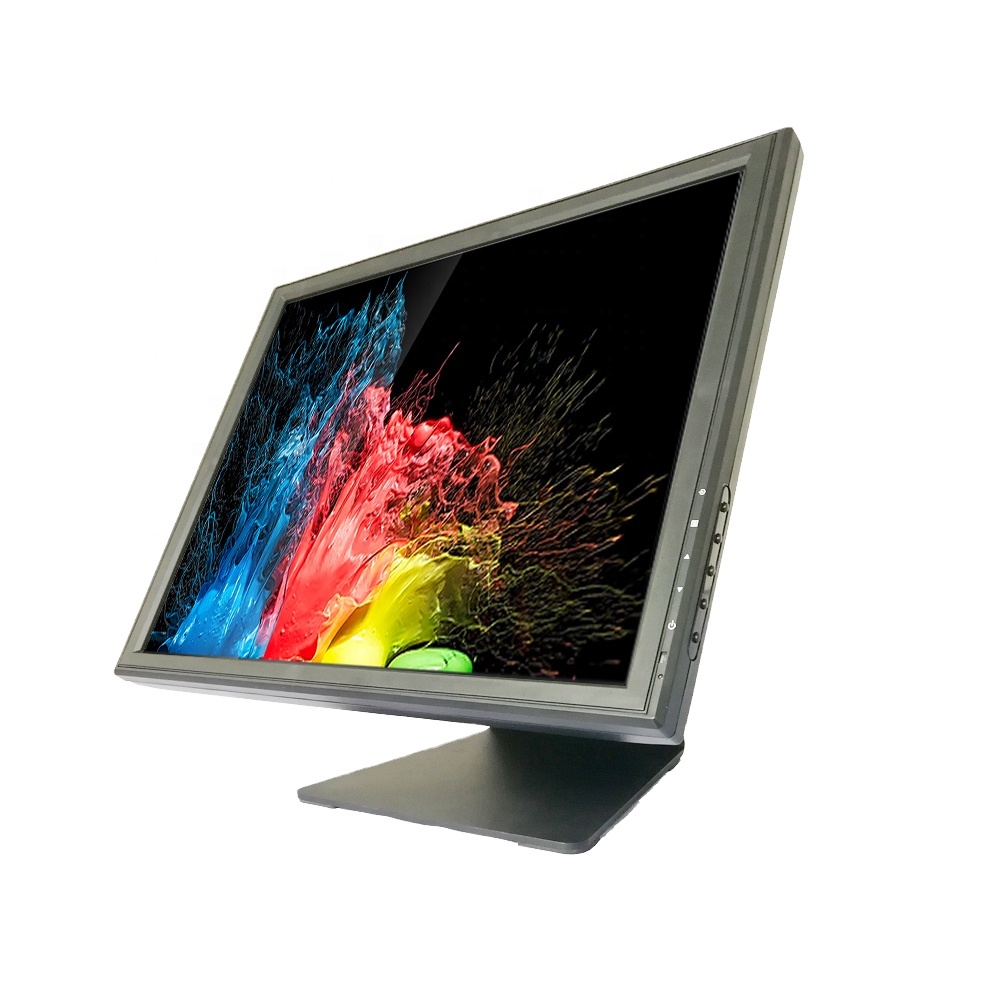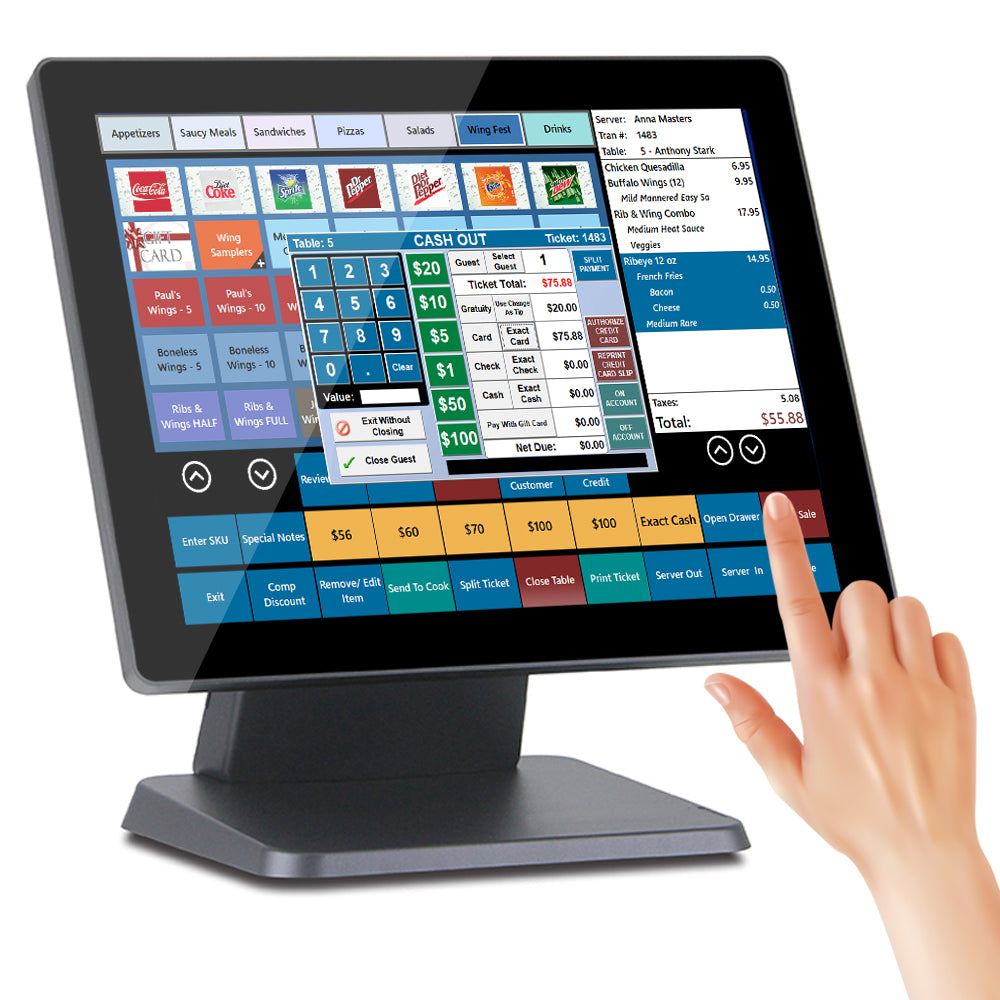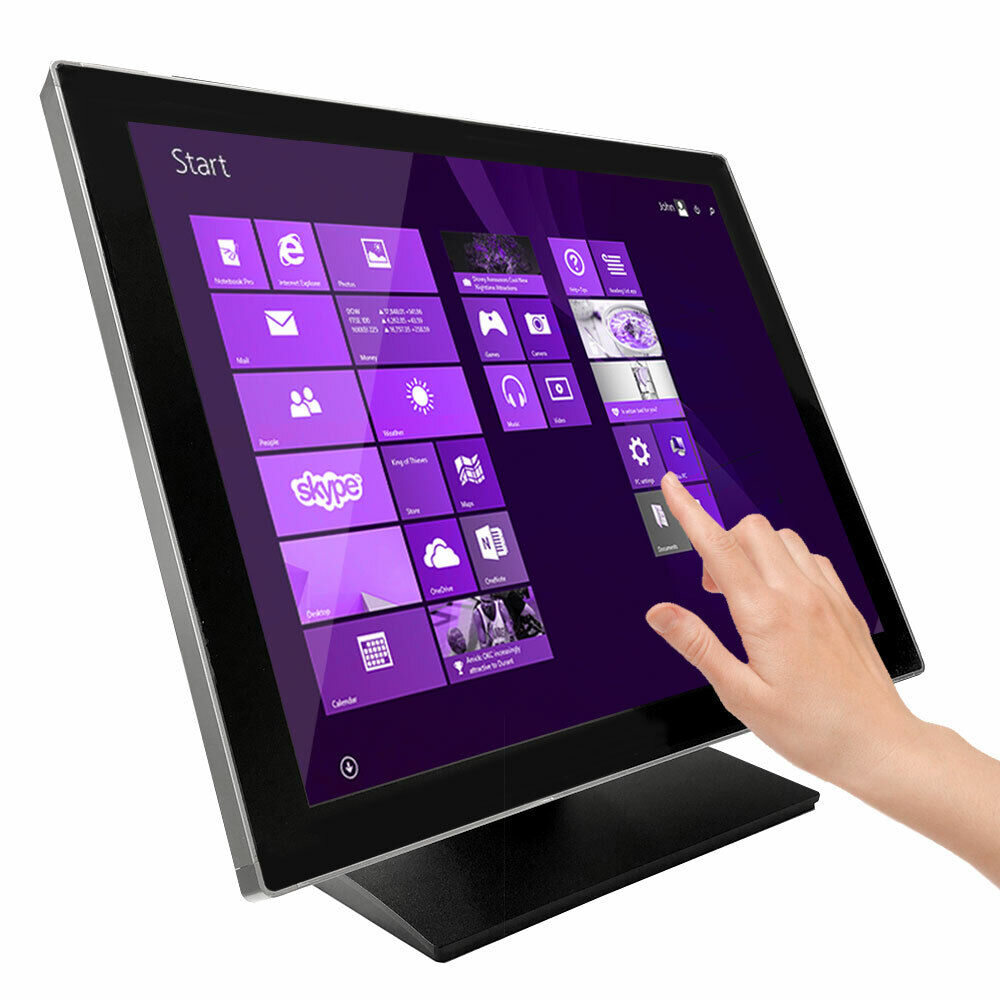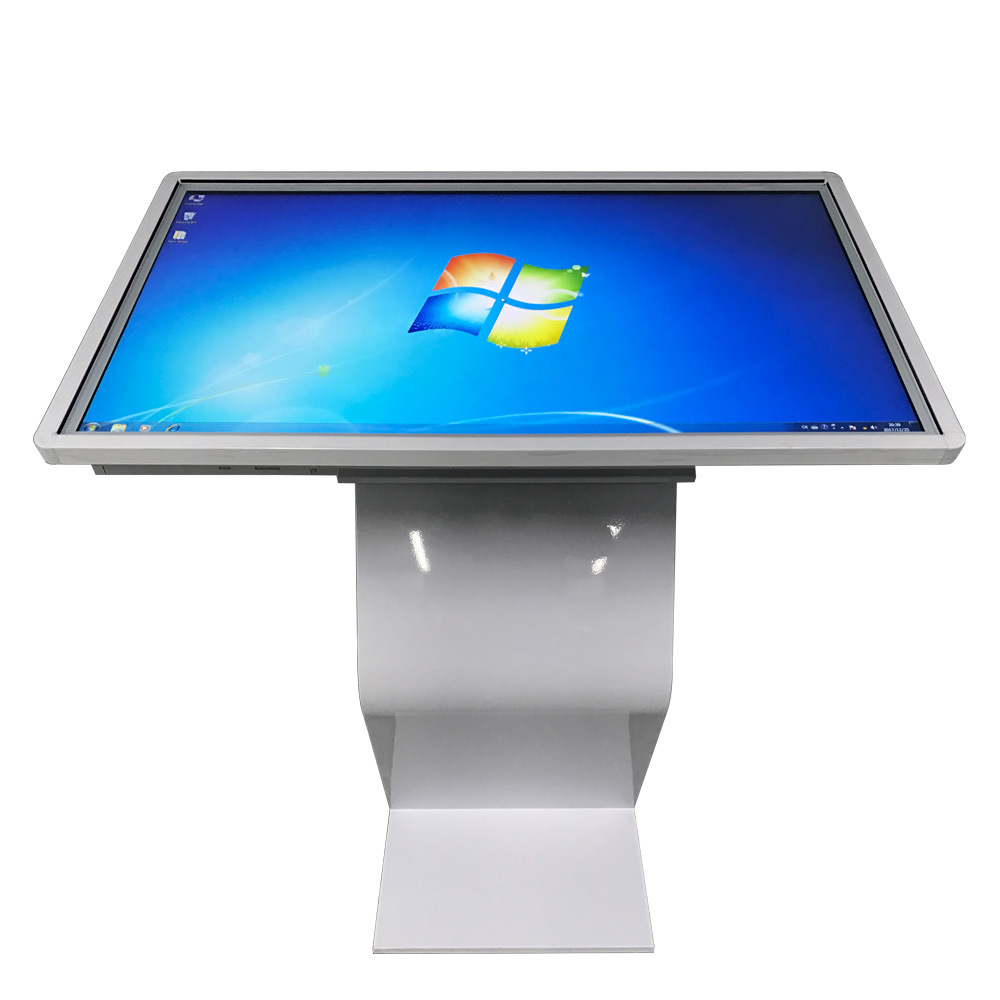Touch screens have fundamentally changed how we interact with technology. From smartphones and tablets to kiosks and ATMs, touch screens are everywhere. They have evolved from rudimentary designs to sophisticated interfaces that enhance user experience. In this article, we’ll explore the history, working principles, types, advantages, and future of touch screen.
The History of Touch Screens
The journey of touch screens began in the 1960s. Early models were mainly designed for specialized applications. These screens used a simple resistive technology and were quite bulky. The first successful touch screen was developed by Dr. Sam Hurst, a professor at the University of Kentucky. In 1971, he filed a patent for what he called the “Elograph.” It was a resistive touchscreen technology, which allowed users to interact by applying pressure.
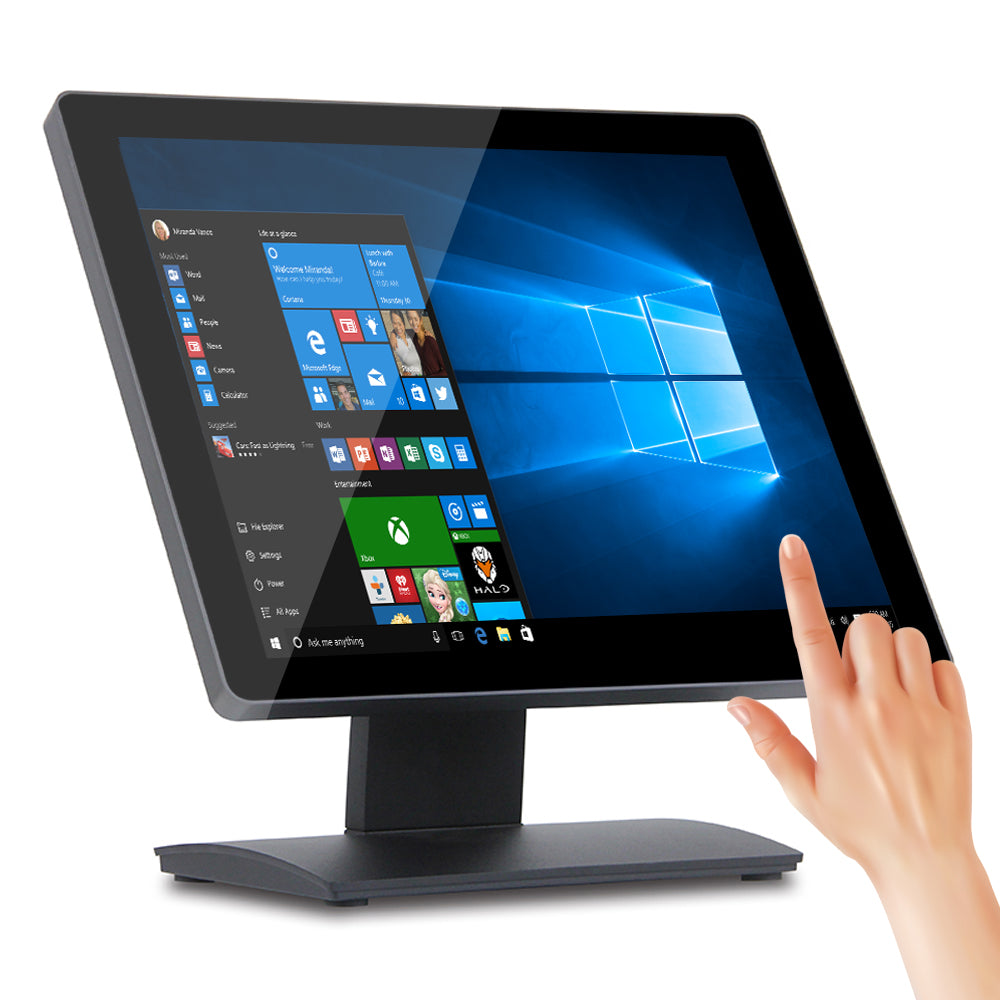
By the late 1980s, advancements led to the introduction of capacitive touch screens. Unlike resistive screens, capacitive technology uses the electrical properties of the human body. This made them more responsive and durable. Companies soon began to embrace this technology for various applications. The early 1990s saw touch screens becoming common in different industries. They were used in medical devices, industrial equipment, and even for information kiosks.
The late 2000s marked a significant turning point. Apple’s introduction of the iPhone in 2007 brought capacitive touch screens into the mainstream. It showcased a user-friendly interface that focused on multitouch gestures. Touch screens became an essential part of smartphones and tablet computing. This made technology more accessible to the average person. Since then, they have continued to become an integral part of daily life.
How Touch Screens Work
Understanding how touch screens work can enhance our appreciation of this technology. There are different types of touch screens, each with unique working principles. The two most common types are resistive and capacitive.
Resistive Touch Screens
Resistive touch screens are composed of two thin layers separated by a small gap. The top layer is flexible, while the bottom layer is rigid. When you press on the top layer, it makes contact with the bottom layer. This creates a voltage change that the device interprets as input.
One advantage of resistive screens is their compatibility with any pointing device, including fingers, styluses, and gloves. They are generally less expensive to produce than capacitive screens. However, they do have some limitations. For example, they only support single-touch interactions. This means you can only register one point of contact at a time.
Capacitive Touch Screens
Capacitive touch screens work on a different principle. They are made up of a glass panel coated with a transparent conductor. When you touch the screen, your body creates an electrical field that alters the charge on the screen’s surface. This change is detected and relayed to the device.
Capacitive screens are renowned for their sensitivity and responsiveness. They facilitate gestures like pinching, swiping, and scrolling. Unlike resistive screens, they usually require direct contact with a bare finger. Capacitive screens tend to be more durable and offer better image clarity. However, they are generally more expensive than their resistive counterparts.
The Different Types of Touch Screens
Touch screen technology has advanced considerably over the years. Various types of touch screens cater to different applications. Each type has its advantages and disadvantages.
Resistive Touch Screens
Let’s discuss resistive touch screens in more detail. These screens are simple and cost-effective. Industries that require rugged and reliable devices often choose resistive touch technology. They can work in various environments, making them ideal for medical and industrial applications.

One of the biggest advantages is their durability. They can withstand harsh conditions, including dust and water. Additionally, because they work with any pointing device, they are accessible in more situations. For example, they can be used with gloves and even styluses. However, resistive technology comes with limitations. As mentioned earlier, they only support single-touch interactions. This can be a drawback in settings that require multitouch capabilities.
Capacitive Touch Screens
Now, let’s focus on capacitive touch screens. These screens dominate consumer electronics. They are favored for smartphones and tablets. Capacitive screens enable more advanced interactions, including gestures. For instance, users can zoom in and out using pinch gestures. This enhances overall usability and user experience.
Capacitive screens also offer better visual appeal. They have high resolution and clarity, improving the viewing experience. You’ll often find them in modern smart devices and consumer electronics. However, they come with their own set of challenges. They can be more expensive and can malfunction in environments where users wear gloves or use styluses that do not conduct electricity.
Surface Acoustic Wave (SAW) Touch Screens
Another noteworthy type is the Surface Acoustic Wave (SAW) touch screen. SAW technology uses ultrasonic waves that travel across the screen. When a finger touches the screen, it disrupts the waves. This disruption is detected, identifying the touch location.
SAW touch screens provide excellent image quality since they do not have layers that interfere with the display. They are often used in kiosks and public information displays. However, their vulnerability to contaminants is a drawback. Dust and water can affect performance.
Optical Touch Screens
Optical touch screens utilize cameras to detect touches on a display. These screens can be found in large interactive displays and digital signage. One benefit is that they can support large areas, making them suitable for public interfaces.
However, they are complicated to manufacture and can be sensitive to environmental conditions. For example, bright sunlight might interfere with their functionality.
Advantages of Touch Screens
Touch screens have numerous advantages. They offer a straightforward user interface, which simplifies interaction. This simplicity is one reason why they have gained widespread adoption.
User-Friendly Interface
The most compelling advantage of touch screens is that they are intuitive. Users can simply tap, swipe, or pinch to interact with various applications. This user-friendly interface allows individuals of all ages to navigate technology easily.
For instance, when children use a touch screen, they can quickly understand how to interact with digital content. This accessibility fosters learning and promotes user engagement. People do not need extensive training on how to use touch screens. This simplicity is one of the crucial factors in the rapid rise of touch screen technology.
Space Saving
Touch screens also save physical space. Traditional input devices like keyboards and mice require a larger footprint. In contrast, touch screens combine display and input into one device. This makes them more versatile and efficient.
In crowded environments, such as stores or exhibition halls, touch screens can help deliver information without taking up much space. They also offer greater flexibility in design. Businesses can create sleek, modern appearances by removing bulky hardware.
Enhanced Interactivity
Touch screens facilitate a high level of interactivity. This feature offers opportunities in education, marketing, and gaming. For example, in classrooms, interactive touch screens can engage students with dynamic lessons.
Businesses can use touch screens in marketing to provide customers with product information. This enhances the user experience and encourages interaction. In gaming, touch screens allow players to engage in a more immersive experience, enhancing overall enjoyment.
Challenges Faced by Touch Screens
Despite their advantages, touch screens face several challenges. These challenges can affect their performance, usability, and even longevity.
Fingerprint Smudges and Dirt
One common issue is that touch screens often accumulate fingerprints and smudges. Regular use can leave the surface dirty, making it challenging to see the display clearly. This can frustrate users and degrade the overall experience. Manufacturers have developed coatings to minimize these issues, but they are not entirely foolproof.
Cleaning touch screens can be problematic, especially in public settings. Users must be mindful of how they clean screens. Some cleaning agents can damage sensitive screens, further complicating the issue.
Calibrating Touch Sensitivity
Another challenge is the calibration of touch sensitivity. Different users interact with screens differently. Some may press harder or softer than others. If the screen is not adequately calibrated, it can lead to inaccuracies.
Manufacturers continually strive to improve touch technology. Advances often lead to enhancements in calibration and sensitivity. However, variations can still occur, leading to user frustration.
Environmental Factors
Environmental conditions can also affect touch screen performance. For example, extremely cold or hot temperatures may impact responsiveness. Similarly, humidity and exposure to direct sunlight can affect touch screen performance.
Some types of touch screens are more resilient to these factors than others. Nevertheless, users should be aware of potential limitations when using touch screens outdoors or in extreme conditions.
The Future of Touch Screens
The future of touch screen technology looks promising. Ongoing advancements continue to push boundaries. As technology evolves, so do the possibilities for touch screens in various sectors.
Advancements in Technology
Emerging technologies like haptic feedback and augmented reality are making waves. Haptic feedback can replicate the sensation of touch, adding depth to interactions. This will make touch screens more engaging and intuitive.
Augmented reality allows users to interact with digital elements within a real-world environment. This fusion of technologies will redefine how touch screens are used in various applications. Healthcare, education, and retail are just a few sectors poised for transformation.
Foldable and Flexible Screens
Another fascinating development is in foldable and flexible screens. These screens can bend and adapt to different shapes. This technological advancement opens up new possibilities for devices. For example, we can expect to see more portable and adaptable devices in the future.
Foldable screens will revolutionize the way users engage with technology. Users will be able to carry large displays that fit in their pockets, substantially changing the landscape of mobile devices.
Inclusivity and Accessibility
Another area for improvement lies in inclusivity and accessibility. Researchers are working towards creating touch screens that cater to individuals with different needs. Features like voice commands or gesture recognition can significantly enhance usability for those with disabilities.
As the need for inclusive technology grows, manufacturers will prioritize these advancements. This will ensure that touch screens are accessible to a broader audience.
Conclusion
Touch screens have come a long way since their inception. They have transformed how we interact with technology, making it more intuitive and user-friendly. While they face certain challenges, ongoing advancements hold promise for a bright future. As they continue to evolve, we can expect them to become even more integral to our daily lives. From smartphones to public information displays, touch screens are likely to remain a central part of our technological experience.
